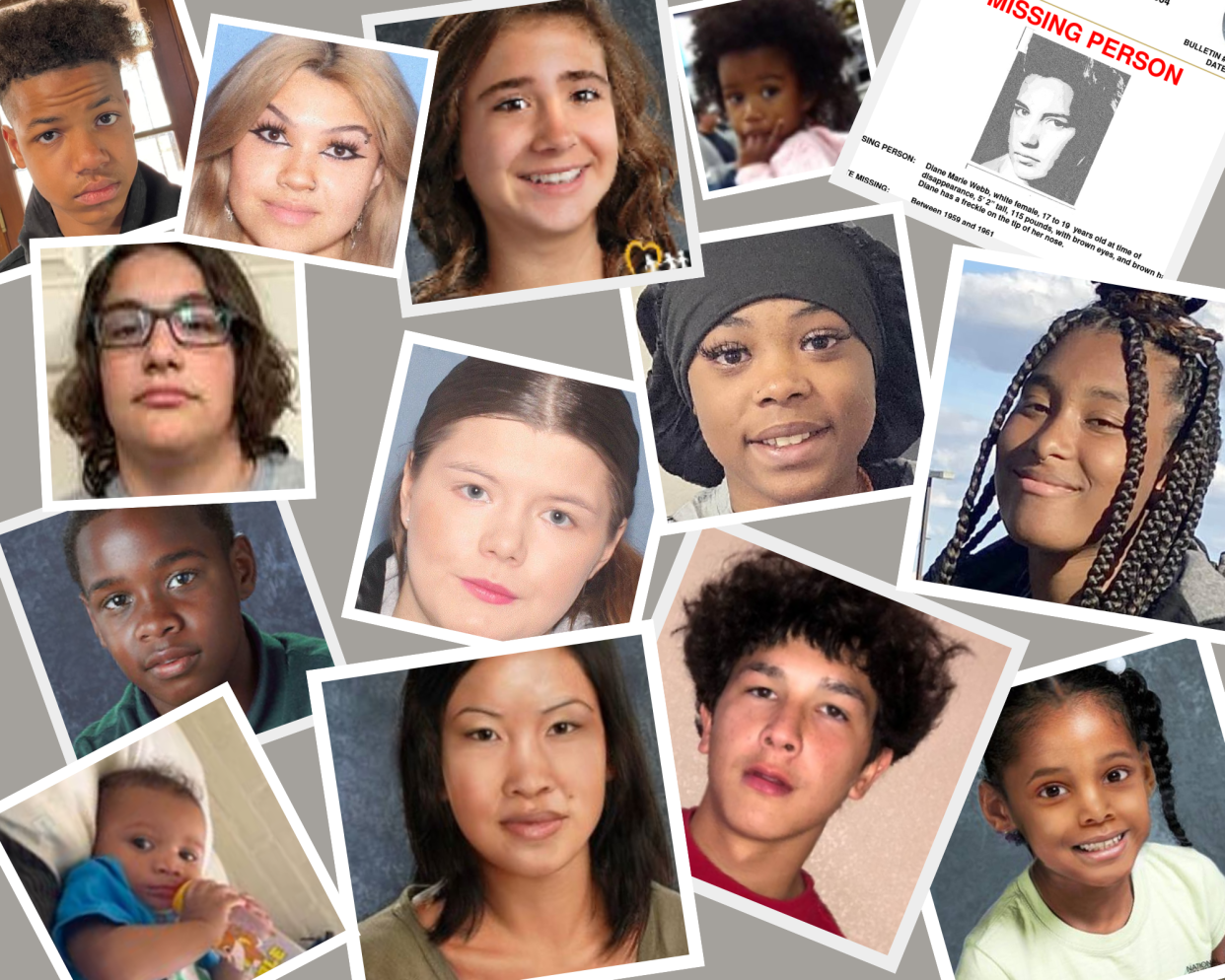Arizona has more than 1,000 active missing children cases. Here's a look at who they are

One missing Arizona child was found in another Western state in July, but more than 500 also went missing in the state in the same month alone.
The children are mostly girls.
The Arizona Missing and Exploited Children Clearinghouse recorded 515 cases of missing children in July, the Department of Child Safety told The Arizona Republic. Of these, more than half were resolved, as current active cases on the AMEC database would show. July was the same month Alicia Navarro, 18, who was missing since 2019, turned up in Montana.
More than 1,000 missing children cases are active across the state according to a check of the database Aug. 8. The number of missing children on the database fluctuates as cases get taken off when a child is found and added to the list when new reports are made.
Arizona Department of Public Safety’s spokesperson Raul Garcia told The Republic that the missing children database automatically pulls missing juvenile information from the Arizona Crime Information Center and FBI’s National Crime Information Center every four hours.
Once a missing child report is made to an investigating agency — usually the police — the department transmits the information to those organizations' active missing person’s files.
About half of missing children files open in the database were reported in 2023. A few cases from the 1950s and 1960s are still open.
For instance, Diane Webb, whose case is the oldest on the list, would be 81 today. She was 17 when she went missing in 1959.
She was last seen getting on a bus in Phoenix to visit her parents, according to a Phoenix Police Department 2012 bulletin. She never arrived.
In 2022, the FBI’s National Crime Information Center had 359,094 entries of missing children nationwide. Even though most missing children are found, the National Center for Missing and Exploited Children, a nonprofit organization established by Congress to handle cases of missing children, said it is difficult to know exactly how many children are missing because cases often are not reported to the authorities.
A USA TODAY investigation in 2022 found that even though a majority of children are found soon after they are reported missing, those who are not tend to be Black children.
What Arizona's database does, doesn't say
Arizona’s missing children database on its own says nothing about the rate at which children are found. Garcia said that’s because the database primarily serves as a tool for law enforcement agencies looking for historical missing incident data, especially when it comes to child sex trafficking victims.
Children on the list are identified by race, and are listed as either Black, white, Indian or Asian. "White" children include those who are white and Latino, according to the Arizona Department of Public Safety. The Indian category includes all persons of Native American, and Alaskan Native origins. In several cases, the missing child’s race is unknown.
“It may be that the families are unknown or simply that the reporting party does not know the race of the missing juvenile at the time of reporting,” Garcia said.
The case of Alicia Navarro exemplifies the happy ending most families hope for. However, tragedy sometimes follows. In January, two missing teenagers, Sitlalli Avelar, 17 and Kamryn Meyers 15, were found dead in a Mesa water basin after they were reported missing from their group home.
The teens’ case led to a bill signed by Gov. Katie Hobbs in June, mandating the Department of Child Safety to notify parents, known relatives or guardians within 24 hours of receiving information about any missing, abducted or a runaway child in foster care. The bill also mandates law enforcement agencies provide all local media outlets and post to social media information about a missing child within 48 hours of receiving a report.
A child in foster care running away or getting taken by a parent is the common case for missing children recorded by DCS, spokesperson, Darren DaRonco said.
“After a court filing to remove a child, sometimes a parent just leaves town with the kid,” he said. “In some cases, a parent comes to visit and just leaves with the child.” The DCS files a missing child report for these situations.
By December 2022, 31 children were missing in foster care, DCS data shows. Of these, 16 were missing for over 180 days.
But what happens when the case involves a child who may be in real danger? The law now makes it necessary for the department and law enforcement agencies to treat every case with urgency and seriousness.
Most missing children at the end of 2022 nationwide were girls, according to NCIC data. The current files of missing children in Arizona show most missing white children to be boys but in the case of Black and Asian children, there are more girls.
Missing children also tend to be between 15 and 17.
This article originally appeared on Arizona Republic: Missing children in Arizona: 500 more reported in July alone

